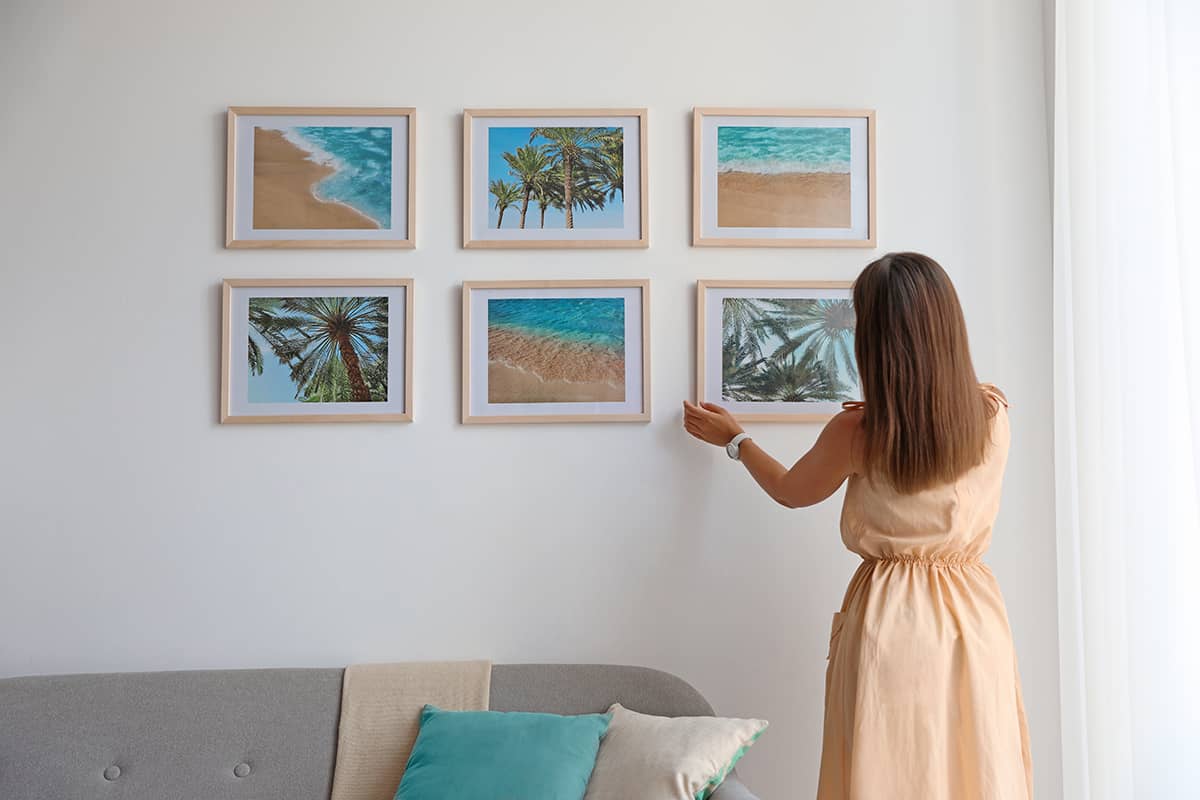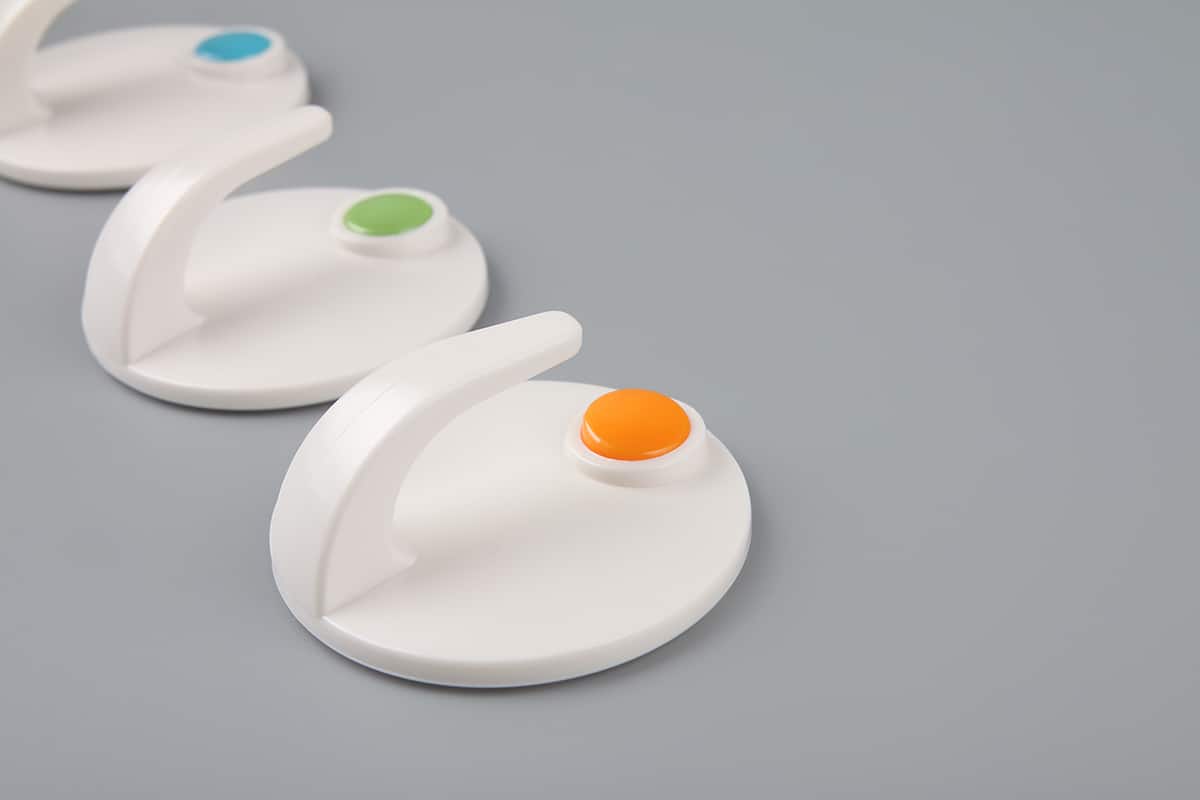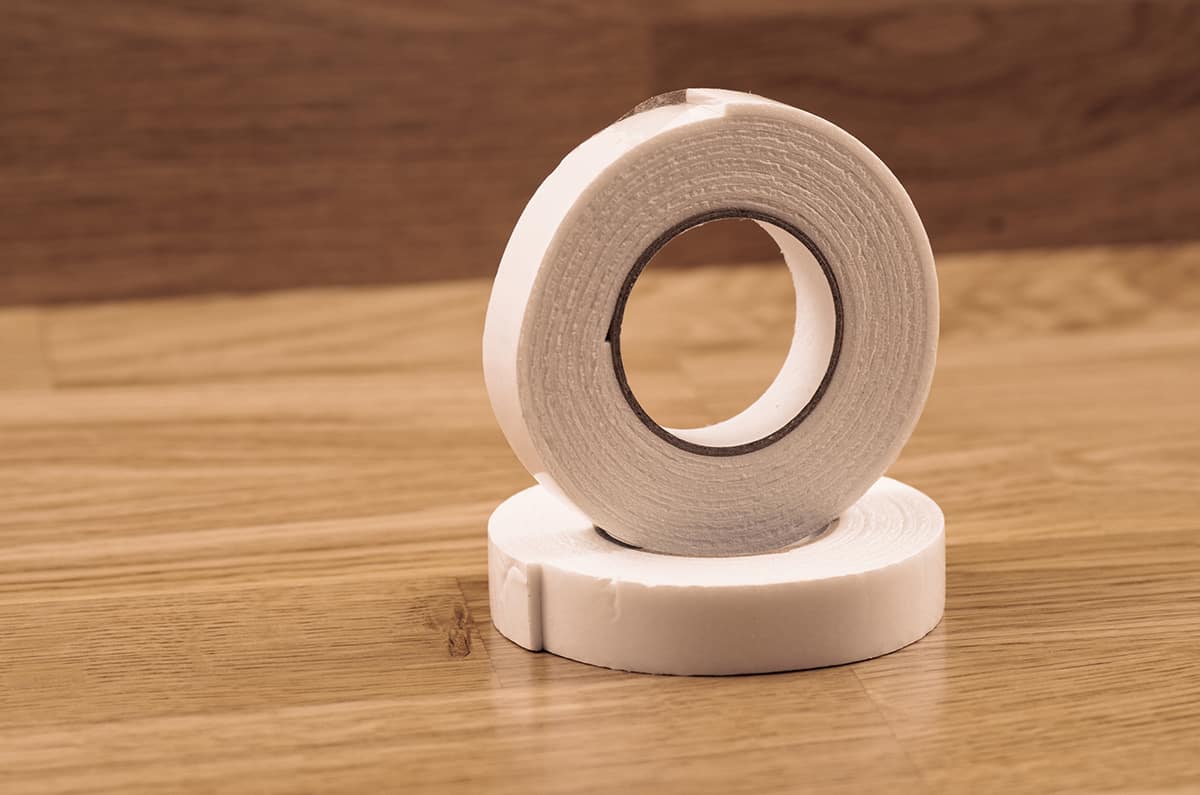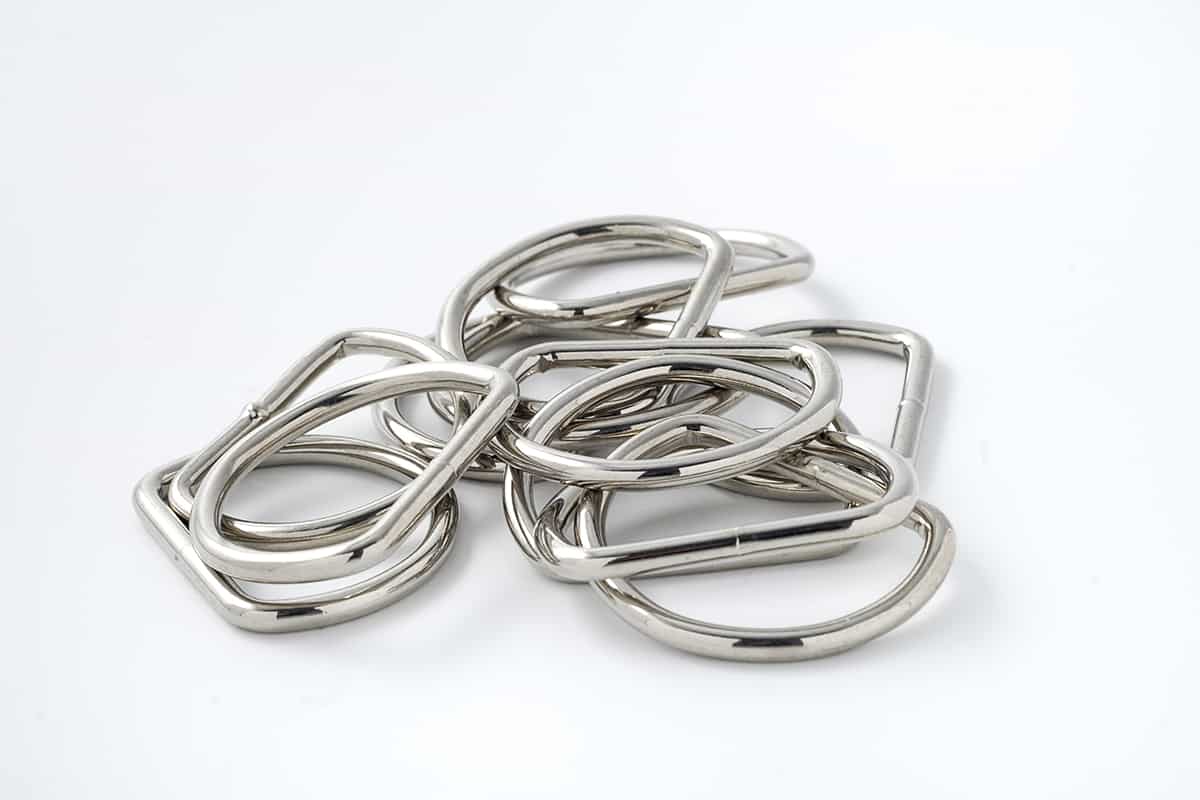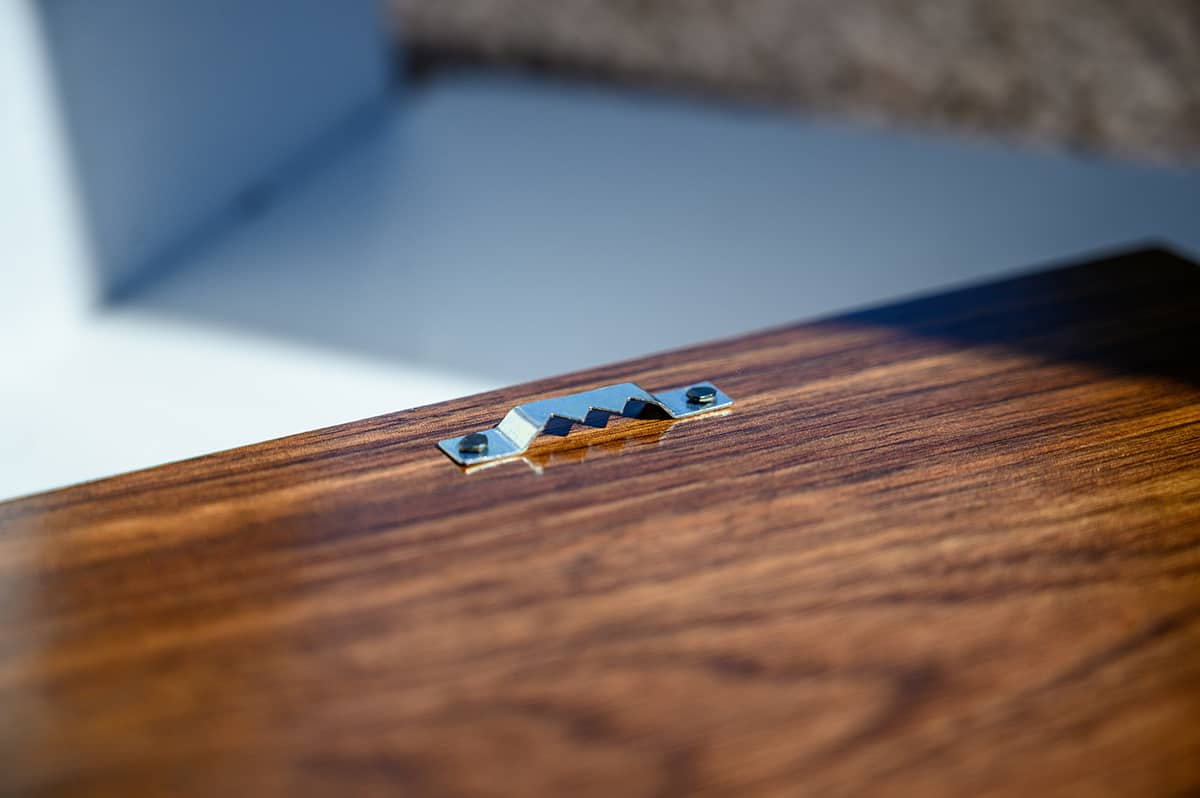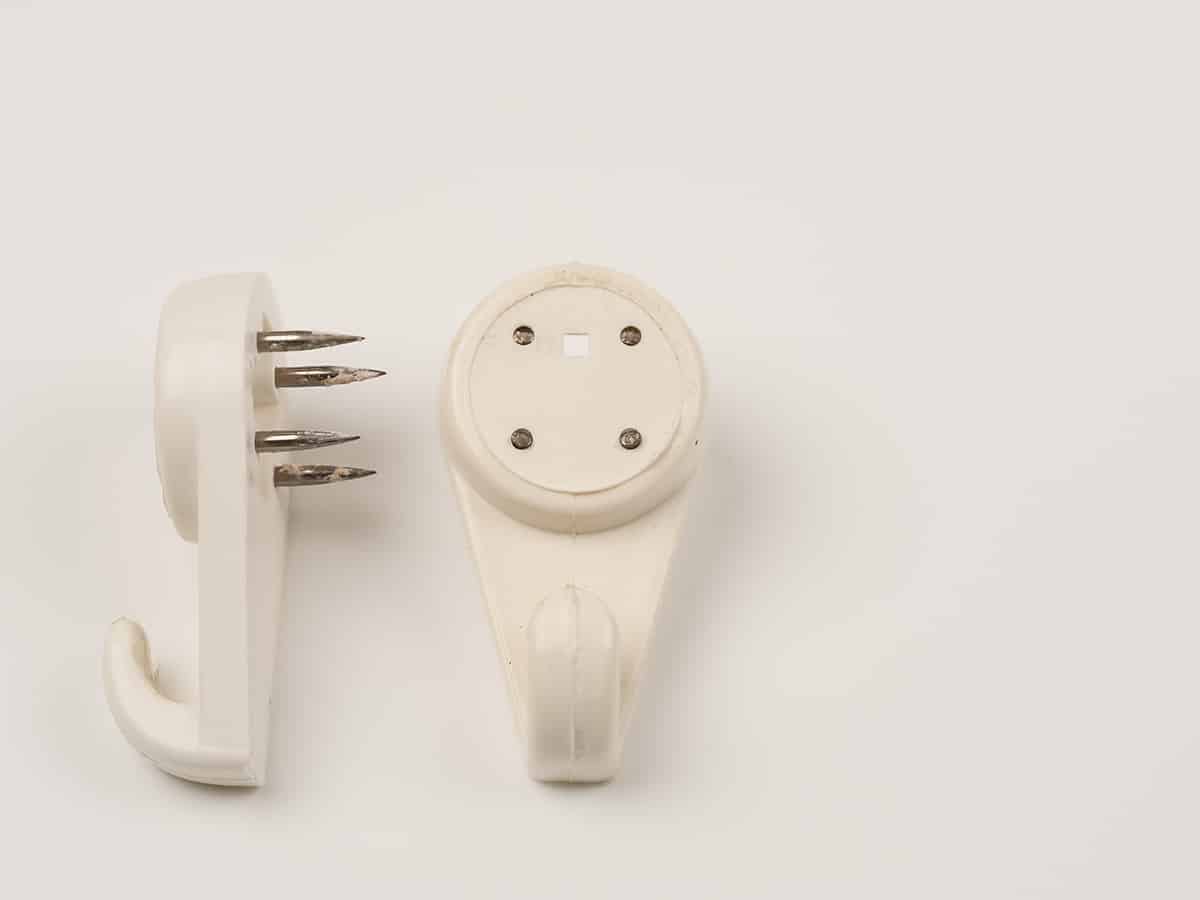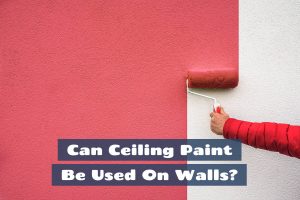There are several instances where you may need to hang a picture without wire, for example, if your frame doesn’t come equipped with wire, if you don’t want to make holes in your wall, or if you don’t have the required tools to hang a picture without wire. Fortunately, there are many alternative options.
Adhesive Strips
If you are reluctant to make any permanent holes in your walls, then adhesive strips are an ideal solution for hanging pictures. These work by using two strips; one which adheres to the wall and one which adheres to the back of the picture frame.
You then line up the corresponding strips, and they latch onto each other using velcro or a similar fastening design. These types of strips are designed to hold lightweight pictures, and you should pay attention to the maximum weight limit as advised by the manufacturers.
For heavier pictures, adhesive strips are not recommended. They are a great way to hang pictures without a wire if you don’t have the tools or hardware required for driving screws or nails into a wall and you don’t want the inconvenience or cost of hiring a contractor.
Adhesive strips allow you to hang pictures in your home in just a few seconds with no mess and no tools required. They do tend to be among the more expensive options for hanging pictures, coming in at around $5 for a pack, compared with the few cents it would cost for a single screw or nail; however, they are still a very affordable option.
Although adhesive strips prevent any holes from being made in your walls, they are not always completely damage-free, as some people find that the paint comes away from the wall when an adhesive strip is removed, which will need to be touched up.
However, these strips are especially useful if you live in an older property where the walls are prone to crumbling if you insert a screw or nail into them.
Adhesive Hooks
Adhesive hooks are another good option when hanging a picture without wire if you want to avoid making holes in the walls. These work similarly to adhesive strips, using a semi-permanent adhesive to fix the hooks to a wall. You would then simply hang your picture frame on the wall using a sawtooth hanger or D-ring, which comes as standard on the reverse of many types of frames.
As with adhesive strips, these can pull paint away from the wall when removed, and they are best suited to lightweight pictures. For the best results, do not apply to freshly painted walls, and ensure your surface is smooth, flat, and clean before application.
Double-Sided Tape
There are some types of double-sided tape that are designed for mounting pictures on the wall, and these are sometimes known as ‘mounting tape.’ These are simply heavy-duty versions of double-sided adhesive tape, with a much stronger and more effective adhesive used on both sides of the tape. To use this, you would cut a piece of tape to size and fix it to the back of your picture frame.
For a more secure fit, apply it to all of the sides on the back of your frame rather than just the top. Once you have applied the double-sided tape to the frame, you can then position it on the wall and apply firm pressure for a few seconds until it is secure.
As with other adhesive options, this is a very easy way to hang pictures without using wire, but you will be limited to hanging lightweight options. You should also be aware that the wall beneath may be damaged when you want to remove the tape, as it can pull away from the wall paint with it.
Wall Nail
If your frame has a hook on the back, then you can hang it on the wall simply by driving a nail into the wall and hanging the frame from this. This is an option if you have drywall or plaster walls, but for brick walls, a nail can cause crumbling.
For the best stability, identify a wall stud to drive your nail into, and drive it in at a downward angle so that the flat end of the screw is pointing diagonally up to the ceiling. You will need a hammer to drive your nail into the wall, being careful not to hit your fingers.
Although this option for hanging a picture will leave a permanent hole in the wall, it is probably the option that will cause the least amount of noticeable damage when you remove the picture at a later date.
A nail hole in a wall can be just a millimeter or two across and can usually not be identified unless you are specifically looking for it. It will likely not need to be filled the way a screw hole would need to be, and it won’t pull paint away from the wall like adhesive hanging options can.
DIY Wire
If your picture does not come with wire or any other fixings on the back of the frame, then you can make your own DIY hanging solution using a few screws and some wire or twine. To do this, you will want to insert two small screws into the back of your frame, one on either vertical side, around two-thirds of the way up.
Once secure, you can then use craft wire or twine to join the two screws together. Tie the twine around one screw and knot it tightly before stretching it across to the other screw and tying it to it. The twine or wire should have some slack in it and not be taut, as this will help to ensure its stability on the wall and help it to sit flat.
Once you have created your own DIY hanging solution, you can hang the frame by balancing the center of the twine on a wall screw or nail. The great thing about this option for hanging a picture frame is that it is very cost-effective and uses materials you may already have in the garage.
You can hang very heavy pictures using this method; just be sure to use several lengths of twine or wire to ensure it is strong enough to handle the weight.
Install D-Rings
If your picture frame does not have any hardware on the back, then one option is to install D-rings. These are small rings shaped like a ‘D’ that come with tiny screws to fix them to the back of frames. You can usually pick these up in craft stores or dollar stores. They are inexpensive and very easy to install – you can either install a D ring on a wireless frame or a frame with wire.
Depending on the size of your picture, you can install one D-ring in the middle of the frame along the top, or you might need one on either side of the frame.
Once the D-rings are securely fitted in place on the back of the picture frame, you will need to insert nails into your wall at the corresponding points for the D-rings to hang on.
If you have used more than one D-ring, you will need to use a tape measure to mark out where your nails need to go so that they line up correctly with the hardware on the back of the frame.
Install Sawtooth Hanger
Another good option to hang a picture without a wire is to install a sawtooth hanger. These are rectangle-shaped hangers that have a jagged bottom edge, making them look like the blade of a saw. These come in numerous sizes to work with a variety of picture frames of different sizes and weights.
Each sawtooth hanger will have a small hole at either end, which a tiny screw will be inserted through and driven into the back of the frame to hold the sawtooth hanger in place.
Like D-rings, sawtooth hangers are easy to install using just a small screwdriver. You could use one sawtooth hanger or several along the top of your frame, depending on its size and weight. Once fixed in place, install nails on your wall on which the sawtooth hangers will hang.
These are a good alternative option to D-rings because they don’t require the nails in the wall to be quite so accurately placed, but you will still need to measure them out.
Plastic Picture Hooks
These small plastic hooks typically take the shape of a hook underneath a rounded mounting component. The round part will feature around four very small nails, which should be hammered directly into the wall, and you can then hang your picture from the plastic hook.
These are good ways to hang a picture without causing noticeable damage to the wall. The nails are so slender that when you remove them, they look like nothing more than tiny pinpricks in the wall. As these hooks are plastic, they do have a weight limit because very heavy frames may cause the hooks to snap.
